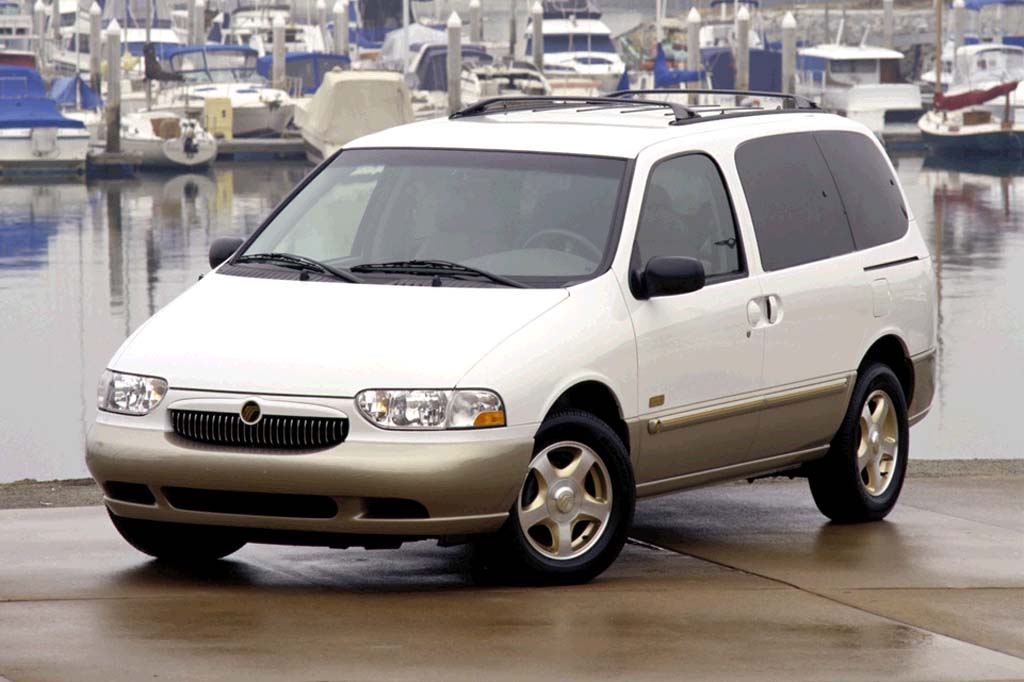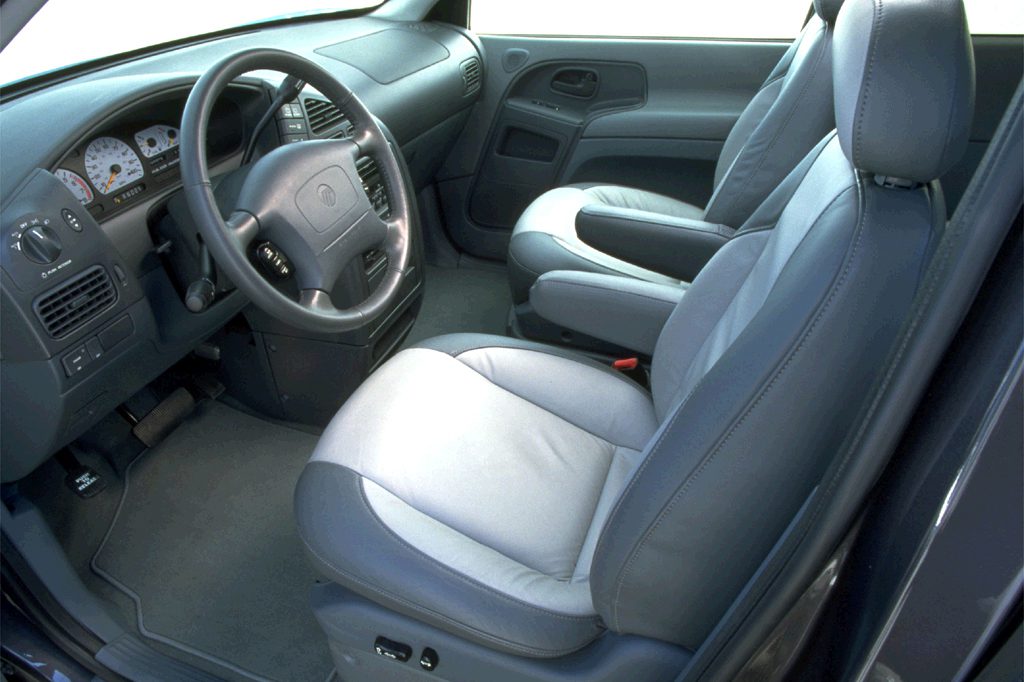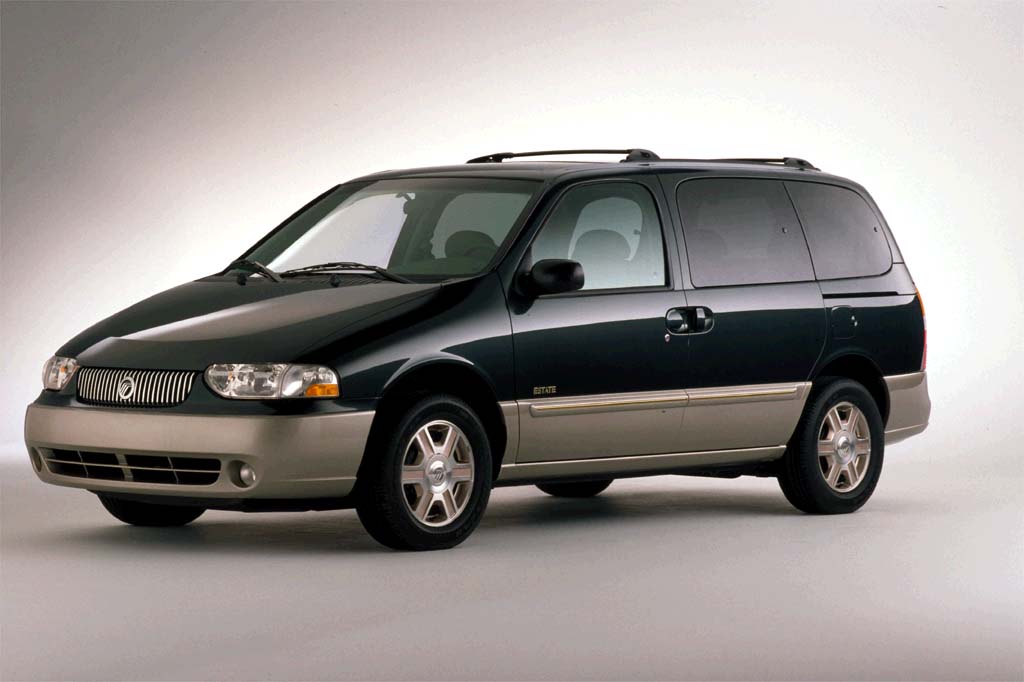| Minivan; Built in USA |
|
|
| Good condition price range: $2,100 – $4,000* |

2000 Mercury Villager

1999 Mercury Villager

1999 Mercury Villager interior

2001 Mercury Villager

2001 Mercury Villager
| Pros: |
|
| Cons: |
|
Smaller outside and inside than most rivals, the Villager and equivalent Nissan Quest are more maneuverable. Both trail the competition in refinement and acceleration. Villagers have not held their value as well as Quests, and are therefore cheaper secondhand.
Overview
Mercury’s front-drive minivan got a major makeover for 1999, including fresh sheetmetal, a bigger engine and a newly standard sliding door on the driver’s side. Villager was available in three models: base, luxury Estate, and Sport. Wheelbase was unchanged, but the body grew by 4.6 inches in length and 1.2 in width, gaining 9.6 cubic feet of interior volume. Sole engine was Nissan’s 3.3-liter V6, delivering 19 more horsepower and 26 more pound-feet of torque than the previous 3.0-liter. A 4-speed automatic was the only transmission. Seating up to seven, all Villagers had two sliding doors, neither of them power-operated. A third-row bench slid on built-in floor tracks. Dual integrated child safety seats were optional with the second-row bench. The revamped interior contained extra storage bins and nets. Estate and Sport models added a two-position rear parcel shelf that could hold up to 30 pounds and adjusted to several heights. Previously standard, antilock brakes dropped to an option. Side airbags were not available.
Yearly Updates
| 2000 Villager A rear-seat video entertainment system became available for 2000, including a VCR, 6.4-inch flip-down LCD screen, and multi-channel audio system. A 3-person second-row bench seat was now a no-charge option on base and sport models, and integrated second-row child seats no longer were available. All models gained rear child-seat anchors. A remote keyless entry/alarm system became standard on all models, and the Estate gained standard leather upholstery. |
| 2001 Villager Villagers got a restyled grille and front fascia, as well as a revised rear liftgate. Sport and Estate models gained restyled alloy wheels. After a brief run of 2002 models, both the Villager and the related Nissan Quest were scheduled to disappear. |
| 2002 Villager Villager is unchanged for 2002, except that it now treated option packages as distinct models. It offered Value, Popular, Sport, Sport Plus, Estate, and Estate Premium versions. |
